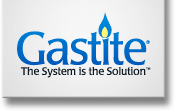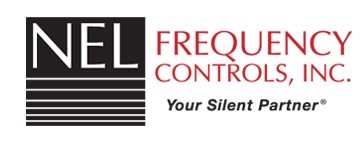Motor Control Centers Market Outlook 2030: Industry Insights & Opportunity Evaluation, 2019-2030
- Report Code : FAT2361795
- Published On: Jun, 2021
- Category : Automotive & Transportation
- Pages : 150
-
Motor Control Centers Market: Market Segments: By Type (Conventional MCC, and Intelligent MCC); By Voltage (Low Voltage MCC and Medium Voltage MCC); By Component (Busbars, Overload relays, Variable speed drives, Soft starters and Others); By End User (Oil & Gas, Chemical & Petrochemicals, Utilities, Food & Beverage, Mining and Others); and Region – Global Analysis by Market Size, Share & Trends for 2014 – 2020 and Forecasts to 2030
Product Overview
Set of either one or more parts enclosed and has a common power bus is a motor control center. The main goal of the MCC is to monitor the distribution of electrical power to electric motors. In order to maximize efficiency and reduce running costs, these centers play an important role. In addition, motor control centers can integrate production and business networks with field equipment efficiently. Widely accepted today in manufacturing units, they provide paramount security coupled with intelligent monitoring as well as motor control relay diagnostic capabilities.
Market Highlights
Motor Control Centers Market is expected to project a notable CAGR of 6.2% in 2030.
Motor Control Centers Market to surpass USD 6.9 Billion by 2030 from USD 4.3 Billion in 2019 in terms of value growing at a CAGR of 6.2% throughout the forecast period, i.e., 2020-30. In emerging economies such as China, India and Brazil, the expansion of the manufacturing sector is expected to remain a key driving force for promoting market growth in smart motor control centers.
Motor Control Centers Market: Segments
Intelligent MCC segment to grow with the highest CAGR during 2020-30
Motor Control Centers Market is segmented by Type as Conventional MCC and Intelligent MCC. The conventional motor control centers segment is estimated to lead the market with a share of over XX.X% in 2019. The key factors driving demand for conventional motor control centers during the forecast period are the increasing demand for industrial automation in developed regions and the benefits provided by conventional motor control centers, such as high level of protection, easy expansion and adjustment, fast and smooth maintenance, and improved reliability and operability.
Motor Control Centers Market: Market Dynamics
Drivers
Increasing Level of Industrial Automation
High levels of automation in manufacturing plants have resulted from technical changes. All manufacturing plants compete to meet standards of quality and safety, achieve maximum productivity, and sustain reasonable prices for goods. This has resulted in industries automating their processes, such as motor control centers, via intelligent motor control equipment. This has further resulted in a growing demand in developing regions for motor control centers.
Restrain
Decreasing crude oil prices
One of the leading end-user markets of motor control centres is the oil & gas industry. The recent decrease in the price of crude oil has led to a dramatic drop in capital expenditures, decreasing demand for industrial equipment. Instead of purchasing new and more effective goods, this has left the oil & gas companies focused more on improving operational performance with the same devices.
Motor Control Centers Market: Key Players
• ABB Ltd.
• Company Overview, Business Strategy, Key Product Offerings, Financial Performance, Key Performance Indicators, Risk Analysis, Recent Development, Regional Presence and SWOT Analysis.
•
• Eaton Corporation
• Larsen & Toubro Limited
• LSIS Co. Ltd.
• Mitsubishi Motors Corporation
• Rockwell Automation, Inc.
• Schneider Electric SE
• Siemens AG
• TES Group
• Tesco Controls, Inc.
Motor Control Centers Market: Regions
Motor Control Centers Market is segmented based on regional analysis into five major regions. These include North America, Latin America, Europe, APAC and MENA.
Motor Control Centers Market in North America led the market with a lion share of more than XX.X% in 2019 in light of growing implementation of automation control systems in the United States and Canada's manufacturing sectors. Rising spending on utilities is projected to have a negative effect on the demand in developed markets, including Germany and France. A positive outlook for manufacturing sectors in China and India is expected to play a crucial role in advancing the growth of the market for smart motor control centers in view of regulatory support to encourage domestic investment. Saudi Arabia's changing preference from the upstream sector to the automotive and chemical sectors of the governments of Middle East countries is expected to increase demand in the manufacturing sector. As a consequence, the factors listed above are expected to open up new opportunities for the Middle East motor control market over the next eight years.
Motor Control Centers Market report also contains analysis on:
Motor Control Centers Market Segments:
By Type:
• Conventional MCC
• Intelligent MCC
By Voltage:
• Low Voltage MCC
• Medium Voltage MCC
By Component:
• Busbars
• Overload relays
• Variable speed drives
• Soft starters
• Others
By End-user:
• Oil & Gas
• Chemical & Petrochemicals
• Utilities
• Food & Beverage
• Mining
• Others
• Motor Control Centers Market Dynamics
• Motor Control Centers Market Size
• Supply & Demand
• Current Trends/Issues/Challenges
• Competition & Companies Involved in the Market
• Value Chain of the Market
• Market Drivers and Restraints
FAQs on Motor Control Centers Market
· Which segment is anticipated to hold the largest market share
· At what CAGR is the market anticipated to grow between 2020 and 2030
· Who are the key players in the Motor Control Centers Market
· What could be the challenging factors in the growth of Motor Control Centers Market
· What are the growth drivers for the Motor Control Centers Market
-
With tables and figures helping analyze worldwide Motor Control Centers market, this research provides key statistics on the state of the industry and is a valuable source of guidance and direction for companies and individuals interested in the market.
Contents
1. Executive Summary
2. Motor Control Centers Market
2.1. Product Overview
2.2. Market Definition
2.3. Segmentation
2.4. Assumptions and Acronyms
3. Research Methodology
3.1. Research Objectives
3.2. Primary Research
3.3. Secondary Research
3.4. Forecast Model
3.5. Market Size Estimation
4. Average Pricing Analysis
5. Macro-Economic Indicators
6. Market Dynamics
6.1. Growth Drivers
6.2. Restraints
6.3. Opportunity
6.4. Trends
7. Correlation & Regression Analysis
7.1. Correlation Matrix
7.2. Regression Matrix
8. Recent Development, Policies & Regulatory Landscape
9. Risk Analysis
9.1. Demand Risk Analysis
9.2. Supply Risk Analysis
10. Motor Control Centers Analysis
10.1. Porters Five Forces
10.1.1. Threat of New Entrants
10.1.2. Bargaining Power of Suppliers
10.1.3. Threat of Substitutes
10.1.4. Rivalry
10.2. PEST Analysis
10.2.1. Political
10.2.2. Economic
10.2.3. Social
10.2.4. Technological
11. Motor Control Centers Market
11.1. Market Size & forecast, 2019A-2030F
11.1.1. By Value (USD Million) 2019-2030F; Y-o-Y Growth (%) 2020-2030F
11.1.2. By Volume (Million Units) 2019-2030F; Y-o-Y Growth (%) 2020-2030F
12. Motor Control Centers: Market Segmentation
12.1. By Regions
12.1.1. North America:
• By Value (USD Million) 2019-2030F; Y-o-Y Growth (%) 2020-2030F
12.1.2. Europe:
• By Value (USD Million) 2019-2030F; Y-o-Y Growth (%) 2020-2030F
12.1.3. Asia-Pacific:
• By Value (USD Million) 2019-2030F; Y-o-Y Growth (%) 2020-2030F
12.1.4. MEA:
• By Value (USD Million) 2019-2030F; Y-o-Y Growth (%) 2020-2030F
12.1.5. Latin America:
• By Value (USD Million) 2019-2030F; Y-o-Y Growth (%) 2020-2030F
12.2. By Type: Market Share (2020-2030F)
12.2.1. Conventional MCC, By Value (USD Million) 2019-2030F; Y-o-Y Growth (%) 2020-2030F
12.2.2. Intelligent MCC, By Value (USD Million) 2019-2030F; Y-o-Y Growth (%) 2020-2030F12.3 By Voltage: Market Share (2020-2030F)
12.3.1. Low Voltage MCC, By Value (USD Million) 2019-2030F; Y-o-Y Growth (%) 2020-2030F
12.3.2. Medium Voltage MCC, By Value (USD Million) 2019-2030F; Y-o-Y Growth (%) 2020-2030F
12.4. By Component: Market Share (2020-2030F)
12.4.1. Busbars, By Value (USD Million) 2019-2030F; Y-o-Y Growth (%) 2020-2030F
12.4.2. Overload relays, By Value (USD Million) 2019-2030F; Y-o-Y Growth (%) 2020-2030F
12.2.3. Variable speed drives, By Value (USD Million) 2019-2030F; Y-o-Y Growth (%) 2020-2030F
12.4.4. Soft starters, By Value (USD Million) 2019-2030F; Y-o-Y Growth (%) 2020-2030F
12.4.5. Others, By Value (USD Million) 2019-2030F; Y-o-Y Growth (%) 2020-2030F
12.5. By End User: Market Share (2020-2030F)
12.5.1. Oil & Gas, By Value (USD Million) 2019-2030F; Y-o-Y Growth (%) 2020-2030F
12.5.2. Chemical & Petrochemicals, By Value (USD Million) 2019-2030F; Y-o-Y Growth (%) 2020-2030F
12.5.3. Utilities, By Value (USD Million) 2019-2030F; Y-o-Y Growth (%) 2020-2030F
12.5.4. Food & Beverage, By Value (USD Million) 2019-2030F; Y-o-Y Growth (%) 2020-2030F
12.5.5. Mining, By Value (USD Million) 2019-2030F; Y-o-Y Growth (%) 2020-2030F
13. Company Profile
13.1.1. ABB Ltd.
13.1.2. Company Overview
13.1.3. Company Total Revenue (Financials)
13.1.4. Market Potential
13.1.5. Global Presence
13.1.6. Key Performance Indicators
13.1.7. SWOT Analysis
13.1.8. Product Launch
13.2. Eaton Corporation
13.3. Larsen & Toubro Limited
13.4. LSIS Co. Ltd.
13.5. Mitsubishi Motors Corporation
13.6. Rockwell Automation, Inc.
13.7. Schneider Electric SE
13.8. Siemens AG
13.9. TES Group
13.10. Tesco Controls, Inc.
14 Consultant Recommendation
**The above given segmentations and companies could be subjected to further modification based on in-depth feasibility studies conducted for the final deliverable.
-
The Motor Control Centers Market has been segregated into various crucial divisions including applications, types, and regions. Each market segment is intensively studied in the report contemplating its market acceptance, worthiness, demand, and growth prospects. The segmentation analysis will help the client to customize their marketing approach to have a better command of each segment and to identify the most prospective customer base.
Report Objectives / Segmentation Covered :
By Companies / players:
By Regions:
By Type:
By Application:
Frequently asked questions(FAQ's):
MI used a variety of industry standards such as NAICS, ICB, TRIC, and others to identify functional players in the industry, which they then shortlist and validate in an iterative process to finalize the most relevant players.
From 2025 to 2030, the Motor Control Centers Market is expected to grow at a compound annual growth rate of YY%, reaching a value of USD XXX Million.
In addition to the Motor Control Centers Market share analysis by competitors, the report also includes chapters on the HHI Index, CR4, and CR8 to characterize the concentration rate and competitive character of the Motor Control Centers Market.
The majority of data for the Motor Control Centers Industry is gathered through primary sources, which include interviews and surveys with industry experts from the core and related industries involved in the supply chain. Secondary sources, such as SEC filings, annual reports, whitepapers, and press releases, are also used.















